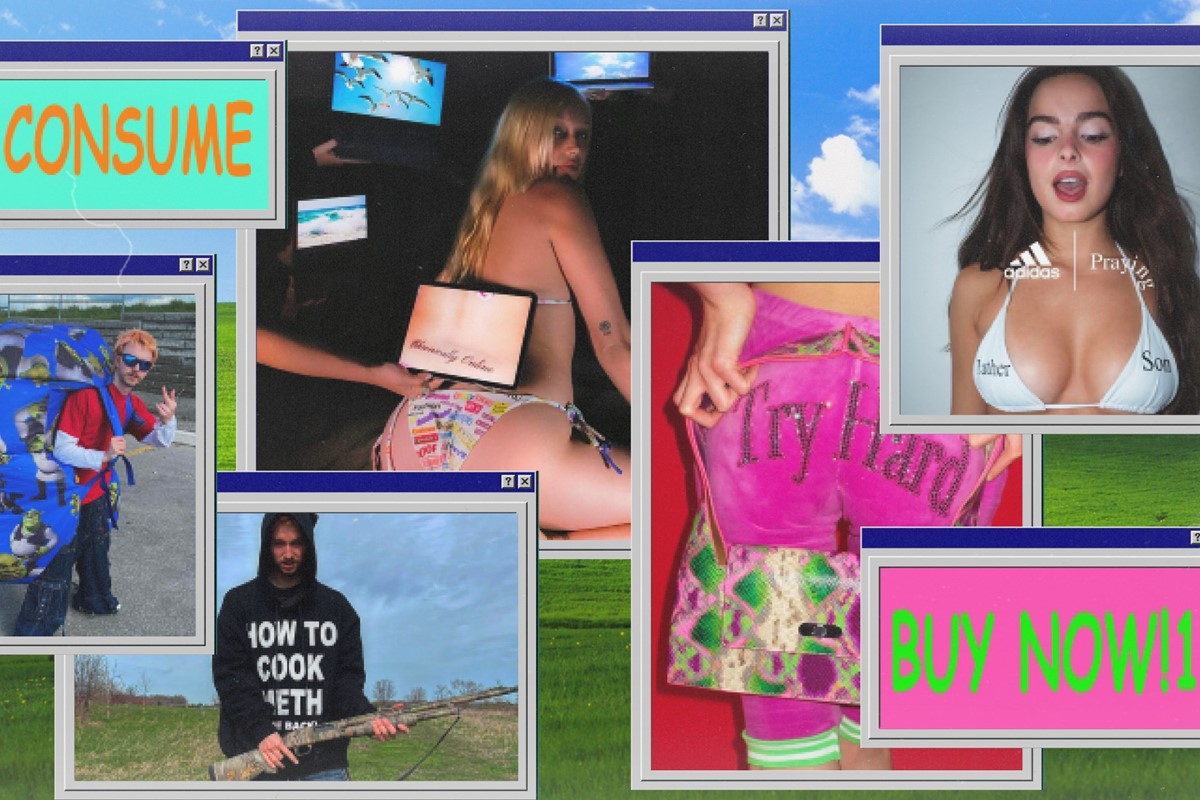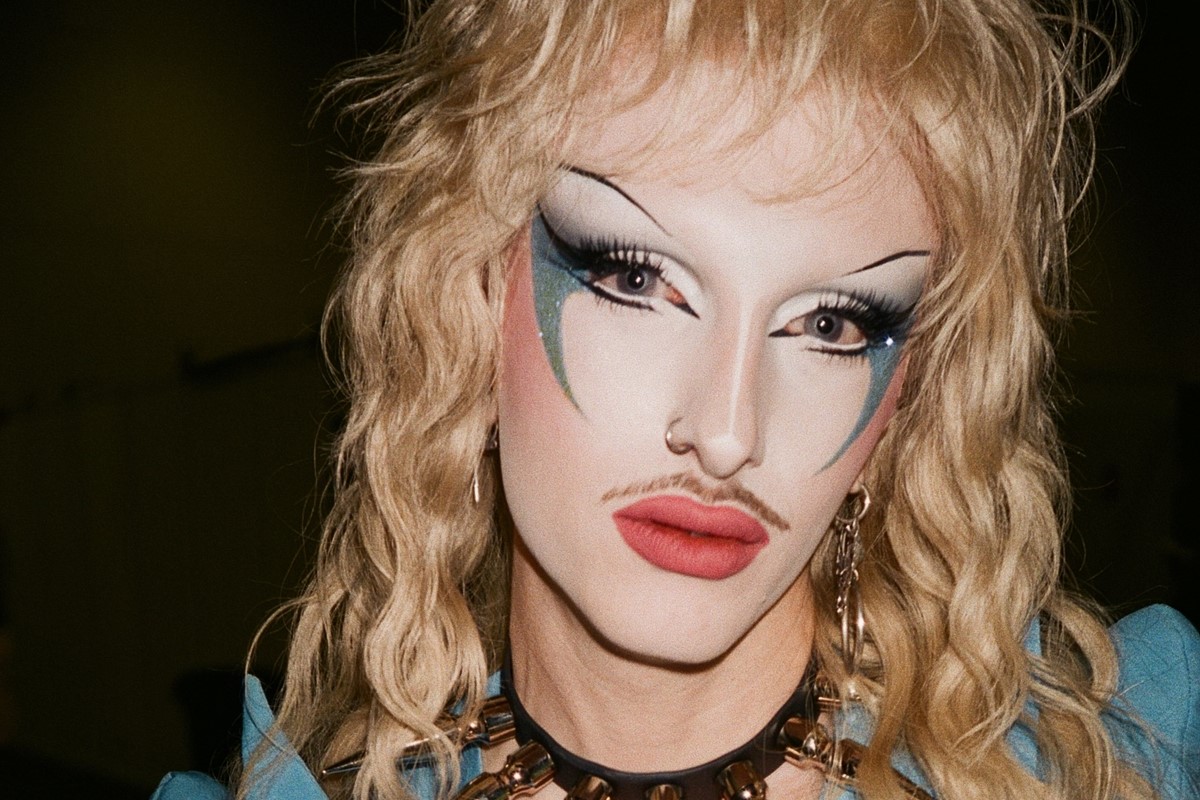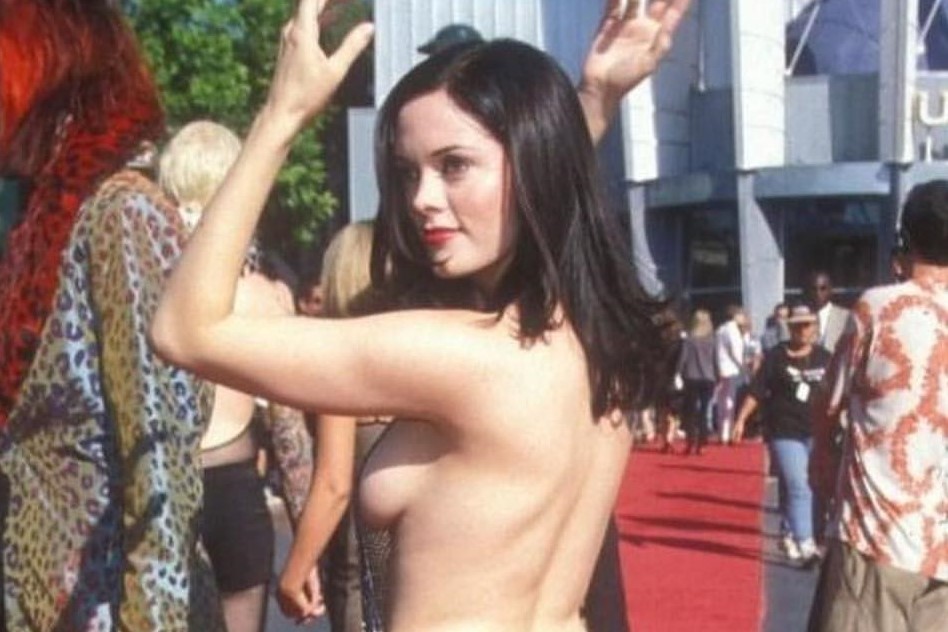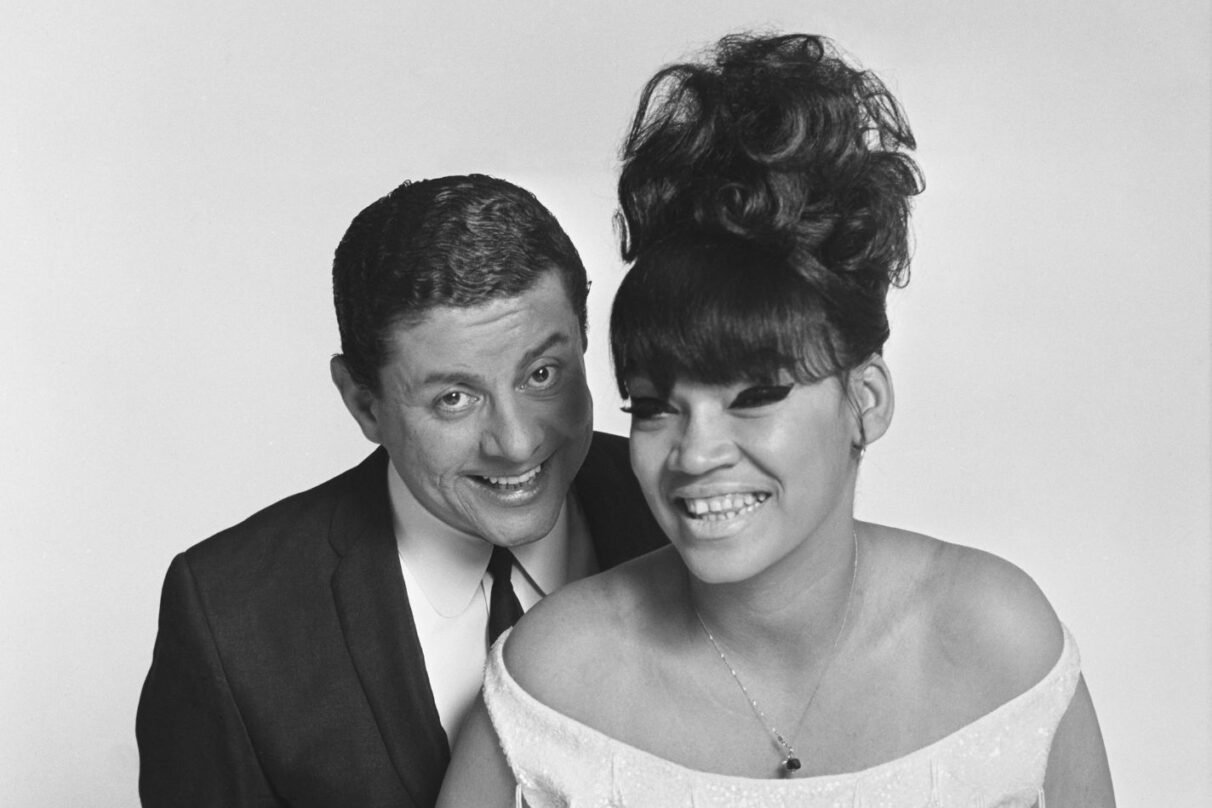
Memes, minions and meta-irony: The rise of post-internet fashion
Is it ironic? Is it serious? Who cares! From Praying to OGBFF, the latest batch of internet-friendly fashion is primed for virality
A few months ago, I sat at a Dunkin’ Donuts in New York while a friend told me about a prank they wanted to pull: to buy a fake Telfar bag, place it in the middle of Dimes Square and watch the inevitable rush of twenty-something downtowners encircle said bag, only to discover that it’s been soiled by a steaming pile of dog shit. I didn’t think much of it at the time, but the story and its nihilistic, shitty irony would serve as a useful metaphor for a trendy fashion taking over the city – and online.
Nowadays, memes are leaking out of our phone screens and onto the streets, as online vernacular taken from social media feeds is being made into mimetic slogans and provocative silk-screened graphics. It’s no Telfar bag in Dimes Square but the garments embody the same self-referential and ironic aesthetic prevalent in memes, with brands such as Praying, Maxine Beiny and OGBFF gaining cult-like followings, combining internet speak with distinct online personas catered to grab the attention of even the smoothest brains. Balancing irony and sincerity, these garments appear, on the surface, deceptively simple: tees, hoodies and bags plastered with slogans in a basic Times New Roman or crude edits of pop-culture characters. But on closer inspection, they reflect a wider shift away from pop culture towards the atomised, frenzied world of the internet.




It’s unsurprising that these clothes initially captivated the attention of New York downtowners. Spread across various Substacks, podcasts and anonymous Twitter accounts, here’s a side of the internet where people with art jobs, Elf Bars and stimulant prescriptions mark their allegiance to online culture by listening to reactionary podcasts like Red Scare, wearing cross pendants and making self-aware jokes about being God’s favourite. Like Dimes Square’s meme-able micro-neighbourhood, the garments are designed for as much life online as off. It was only a matter of time until this post-ironic strain of fashion would make its way across the web and into the shopping baskets of e-girls and edgelords.
But make no mistake: for those not trudging it out in the internet trenches, these clothes could easily be mistaken for low-end tatt – the sort of stuff you would, and indeed do, find in dollar stores everywhere. Many of the trend’s key designers are self-taught. But you only need to think of Demna-era Vetements or Balenciaga’s 2018 tourist bags to understand that this unorthodox approach isn’t new: designers have been creating viral garments, items that have the irony and popularity of memes, for years. But where these pieces drew on consumer goods such as DHL jackets or Thrasher t-shirts, this batch of meme-able, hype-friendly garments pull inspiration from a new social cachet: the internet.
“People want to express themselves and aren’t bothered about what people think of them,” says UK designer Maxine Beiny, whose y2K-inspired velour garments feature rhinestoned phrases such as ‘Silly Bitch’ or ‘My Boyfriend Won’t Mind’. “Finding ‘based’ clothing is a way to express yourself and separate yourself from others.”
Even the clothes themselves follow the image-text format of a meme. Think: New York-based brand Praying’s barely-there Holy Trikinis, bags screen-printed with ‘Brangelina’ or shirts that reads ‘Rotisserie Chicken $5.99’. With an e-commerce site reminiscent of early-internet Geocities, the label’s editorials, set in dingy motels and suburban homes, emulate the DIY approach fostered by at-home creators, while meme-like promotional content – a BeReal image featuring the brand’s ‘Dudes = Hot’ vest, a model smoking six joints out a recorder – is primed for virality.
“I consider memes the most prevalent form of art in modern society, and naturally this form of art would break into other mediums such as clothing” – James Wallace
Similarly, LA-based brand OGBFF makes clothes that feel like they’ve been pulled from the contents of an Instagram grid, targeted at the sort of unbothered, cool girl who has Britney’s iconic 2002 ‘DUMP HIM’ tee saved on archive. The garments include snappy slogans like ‘CANCELLED ADJACENT’ and ‘FLOP ERA’ in all caps, or bikinis emblazoned with WordArt. “They’re perfectly subtle statements that classify you as being on the right side of the internet, which is the side that prioritises authenticity as opposed to hyper-curation,” says co-founders Angela Ruis and Lauren Schiller.
As with memes, there’s a sense of being in on the joke. “We are inspired by one another and the type of absurd humour that is born and bred on the internet,” they continue. “We are also really inspired by friendship. Close friendships have the ability to cultivate a sense of humour where you could cry laughing at something that is absolutely not funny outside of the context of your friendship. Somehow we’ve been able to tap into that on a large scale.”
Beyond simple text-garment layouts, designers are also building on the absurdity of the present, the inevitability of capitalist realism, to create offbeat designs pulled from internet culture. Perhaps the biggest example of this is James Wallace, the internet renegade known for his based designs under the alias Haunted Starbucks. These extremely online garments include a blue-and-white trucker cap emblazoned with the words ‘I fucking love microplastics’, or crudely drawn slogans such as ‘Dubstep, weed and jacking off’ plastered onto a cheap white tee, hoodies with instructions on how to cook meth and an unofficial Joe Rogan t-shirt advertised by way of a satanic summoning. It’s wearable content – yes, content – in that based, New Models reader, enviro-meme, manopshere, e-deologies kind of way; to be worn by those tapped into these hyperspecific online worlds.
“I consider memes the most prevalent form of art in modern society, and naturally this form of art would break into other mediums such as clothing,” he explains. “The main goal of anything that I create is really just to either make myself laugh or further the creative world which I am building throughout my collections.” His latest collection Harmony Laborer infuses workwear with various cryptic logos and motifs, such as 6G tote bags and hoodies printed with Despicable minions and Shrek. “It’s just general dystopia and the impending doom that kind of faces all of us every day.”
Inspired in equal parts by OG memelord Versace Tamagotchi, AKA LA director Jack Wagner, and early Yung Lean (“I saw the kyoto music video and thought to myself wow, if this kid from Sweden can do something like this then why can’t I?”), Wallace’s work draws from the sort of DIY, alt online communities such as Soundcloud rap and Drainerdom. “Internet culture is shaping people’s fashion taste by stuffing various identities down their throats; personalities that are easily accessible and replicable. Look at all of the kids that follow Sematary or Bladee on IG, they look and dress exactly like their idols. Kids are desperate for a sense of identity and the internet has made it a lot easier for them to find a unique one.”
But, as with any internet-born trend, especially one centred on memes, there’s a risk of becoming irrelevant – and fast. The clothes will stay the same but the context will be archived in the cobwebbed backlogs of the feed, becoming what cultural critic Biz Sherbert refers to as “screenshot memories of when what’s no longer transgressive still was”. A meme with no context is just an image, so will it stand the test of time? Or will it fall victim to the eternal scroll?



